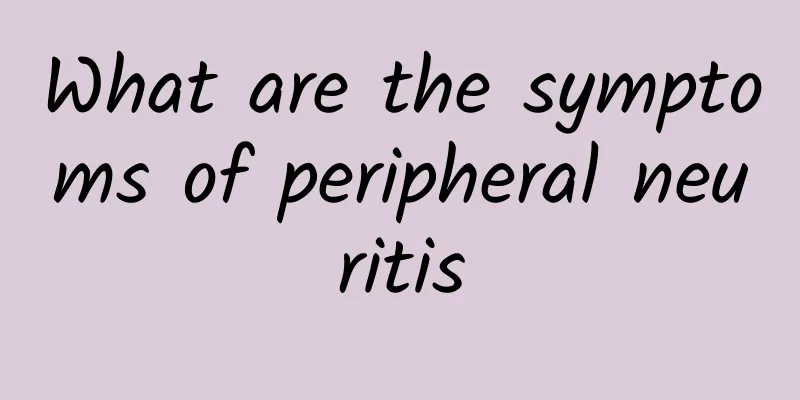Nursing of three-chamber two-balloon tube

|
The human body has many densely packed structures. The body is like a great science that requires people to explore and study. When problems occur in certain organs of the body, reasonable care is required, and one must solve one's illness under the guidance of a professional doctor. The care method of the three-chamber two-balloon tube is very simple. The first step is to treat some people with ruptured gastric varicose veins. Indications: Compression hemostasis for patients with severe bleeding due to ruptured esophageal and gastric varicose veins. Contraindications: Use with caution in patients with severe coronary heart disease, hypertension, and heart failure. Preoperative preparation 1. Understand and be familiar with the patient's condition. Talk with the patient or family members, and use plain language to briefly explain the significance and role of using the three-chamber two-balloon catheter to stop bleeding and how to cooperate. Also explain the risks and accidents during the operation, and strive for the cooperation of conscious patients.2. Check for nasal polyps, thickened nasal conchae and deviated nasal septum, insert the cannula on the larger side of the nasal cavity, and clear the crusts and secretions in the nasal cavity. 3. Instrument preparation: three-chamber two-balloon tube, 50ml syringe, 3 hemostatic forceps, treatment tray, sterile gauze, liquid paraffin, 0.5KG heavy sandbag (or saline bottle), blood pressure monitor, bandage, and wide adhesive tape. Operation steps 1: Wash your hands and wear a mask and a hat.2: Carefully check whether the balloon of the three-chamber two-balloon tube is loose or leaking, whether it expands evenly after inflation, and whether the tubes leading to the esophageal balloon, gastric balloon and gastric cavity are unobstructed. Find the marks at 45, 60, and 65 cm on the tube wall and the outer opening of the three-lumen channel. 3: For restless or uncooperative patients, 5-10 mg of diazepam can be injected intramuscularly. Clear the crusts and secretions in the nasal cavity. 4: Drain all the gas in the double balloons and apply liquid paraffin to the front end of the three-lumen tube and the surface of the balloons. Insert the three-lumen tube into the patient's nasal cavity and ask the patient to swallow when it reaches the pharynx. Allow the three-lumen tube to be smoothly inserted to the 65cm mark. If the gastric contents can be drawn out from the gastric tube cavity, it means that the tube end has reached the pylorus. 5: Use a syringe to inject 250-300 ml of air into the gastric balloon (intra-balloon pressure: 5.33-6.67 kPa, i.e. 40-50 mmHg) to inflate the gastric balloon. Clamp the lumen with a vascular clamp, then pull the three-lumen tube outward. When you feel moderate elastic resistance, it indicates that the gastric balloon has been pressed against the fundus of the stomach. Then use a 0.5kg sandbag to continuously pull the three-lumen tube through the pulley to achieve the purpose of sufficient compression. 6: If compression still fails to stop bleeding after observation, inject 100-200 ml of air into the esophageal balloon (pressure inside the balloon is 4-5.33 kPa, i.e. 30-40 mmHg), and then clamp the lumen to directly compress the varicose veins in the lower esophagus. 7: Regularly aspirate gastric contents through the gastric tube to observe whether bleeding continues. Nasogastric feeding and related treatments can also be performed through the gastric tube. 8: Check the pressure inside the airbag every 2 to 3 hours. If the pressure is insufficient, add air to increase the pressure in time. The esophageal balloon is deflated and the traction is relaxed every 8 to 12 hours. At the same time, the three-lumen tube is pushed deeper to separate the gastric balloon from the gastric fundus mucosa. Before deflation, 15 to 20 ml of liquid paraffin is taken orally to prevent adhesion or necrosis of the gastric fundus mucosa and the balloon. After 30 minutes, inflate the airbag again. 9: 24 hours after the bleeding stops, remove the traction sandbag and deflate the esophageal balloon and gastric balloon, and continue to leave them in the stomach for observation for 24 hours. If there is no further bleeding, ask the patient to take 15-20 ml of liquid paraffin orally, then drain the gas from the double balloons and slowly remove the three-lumen tube. Note: 1. Do a good job of ideological work on the patient before the operation and strive for cooperation. 2. Be gentle during the operation to avoid lacerations of the pharynx and esophagus. 3 When the three-chamber two-balloon tube is lowered into the pharynx, the patient should be asked to swallow to prevent it from entering the trachea and causing suffocation [1]. |
<<: Metformin for polycystic ovary
>>: The test was done the next day after blastocyst transfer.
Recommend
How to treat intercostal neuralgia and costochondritis
When intercostal neuralgia and costochondritis oc...
What else can be added to coix seed and red bean to remove moisture quickly
What else can be added to coix seed and red bean ...
What's the quickest way to reduce internal heat? What is the best way to reduce fever?
In life, many people will inevitably get irritate...
Vulvar leukoplakia cream
There are many skin diseases in the human body. T...
The pros and cons of laser treatment for pseudohygroma
The human penis area is particularly prone to dis...
What should I do if my baby has stomachache and vomits?
It is inevitable that the human body will have so...
Can I eat grass jelly when I am pregnant?
Diet is very important for pregnant women. A good...
How many levels are there for patients with mental disorders?
Patients with mental disorders are generally divi...
This is how you improve your cold constitution!
When the temperature turns cold in autumn and win...
Symptoms of sexual deviancy in men
As the pressure of our lives increases, many peopl...
What is the cause of the left kidney cyst?
Studies have found that congenital maldevelopment...
How to quickly relieve body aches
There are many reasons for body aches, such as co...
What is urinary discomfort?
Urination is something the human body needs to do...
What are the Chinese medicine formulas for treating gastrointestinal tract?
Gastrointestinal diseases often affect and threat...
The harm of injection for cervical pain
Cervical pain is a very difficult disease to endu...









